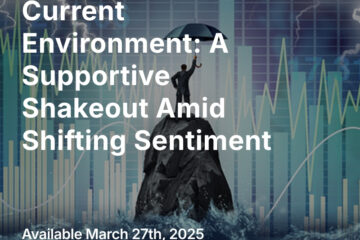Earnings season is underway. As we wrote last week, we expect a down quarter for real earnings; of most interest to us will be the tone of management forward guidance. We are already hearing a lot of talk about rising costs and ongoing supply chain issues. We’ll be listening closely to many calls, and will tell you what we hear.
Our focus continues to be on commodities as noted above, particularly tech and energy-related commodities including copper, zinc, nickel, and rare earths; energy-related including oil, lithium, and uranium; and precious metals, including gold and silver. We include bitcoin in the last category as it also is a “vote of no confidence” in the competence of governments’ monetary and fiscal policies.
We are not counting out equities. We believe, as we noted above, that rising rates will force a contraction of multiples, and this will be particularly hard for longer-dated assets, such as the stocks of tech companies with profits (or even earnings) only visible years in the future. Still, given the larger picture, real innovators remain on our minds and in our buy lists. We are anticipating a deeper correction in many of these names which will present a more appetizing buying opportunity.
Gold
For 11 years, gold has been battling the $2000 mark. Many analysts have gold targets for the year near $2500. We simply note that when gold breaks decisively about $2000, that level will no longer be resistance; it will be support. Goldman Sachs commodity analyst Jeff Currie recently commented:
“…physical demand remains strong with ETFs continuing to build, U.S. gold coin purchases elevated, Shanghai gold premium positive and gold purchases by both Russian [central bank] and retail investors accelerating. The only physical weak spot is India, where consumers stepped back due to high local gold prices. We believe that even India weakness is a temporary setback which always happens after a large price rally. While near-term gold is driven by futures flows on a medium-term basis, physical demand is a much more important driver. Therefore, the current disconnect between price and unprecedented physical demand strength cannot last long. With the geopolitical risk premium around the Russia-Ukraine conflict now priced out of the market, the current gold price, in our view, offers an attractive entry point. We expect the strongest physical demand impulse in 10 years to continue into the year end as US growth slows, Russian [central bank] continues to ramp up its gold purchases after [the] ruble stabilises and consumers accelerate their gold purchases due to their rising dollar purchasing power.” We agree with this analysis.
Hard Times For NFTs
Last year, Twitter founder Jack Dorsey acutioned off his first tweet as a digital “non-fungible token,” or NFT — a unique and transferrable asset that lives on a blockchain. The media have been full of outlandish accounts of the astronomical sums fetched for NFTs (bought, we note, mostly with “found money” from early crypto adopters who might rationally value the status conveyed by such possessions more than the digital tokens they acquired by intelligence and good fortune, but not by much hard work). Dorsey’s Tweet fetched $2.9 million. The buyer recently tried to auction it off, listing it at $48 million, but unfortunately, the top bid he received was… $280. Maybe this is what happens when “animal spirits” depart.
Do we need to say it again? Caveat emptor. Bitcoin is not a bubble, ponzi scheme, or scam… but plenty of such things exist in the crypto space.
NFTs are a fascinating technology, encoding unique rights in a programmable and exchangeable digital asset. However, the hype about NFTs is just that… hype. More interesting to us was Snoop Dogg’s announcement that he would be selling unreleased songs as NFTs on the Cardano blockchain — signalling, we would say, his business acumen both by the sale and by his platform choice. In the future, creators will be able to sell NFTs that confer rights to singular real-world objects — and the embedded logic of the digital assets will allow, for example, a portion of all revenues from future exchanges to be directed back to the creator. This is why some forward-looking musicians see that NFTs have the potential to revolutionize the music industry, and disintermediate current digital music streaming and distribution platforms just as those platforms disrupted legacy media. NFTs have a myriad of potential applications in many industries… just don’t believe that has anything to do with Bored Apes (the first popular NFTs).
Thanks for listening; we welcome your calls and questions.



